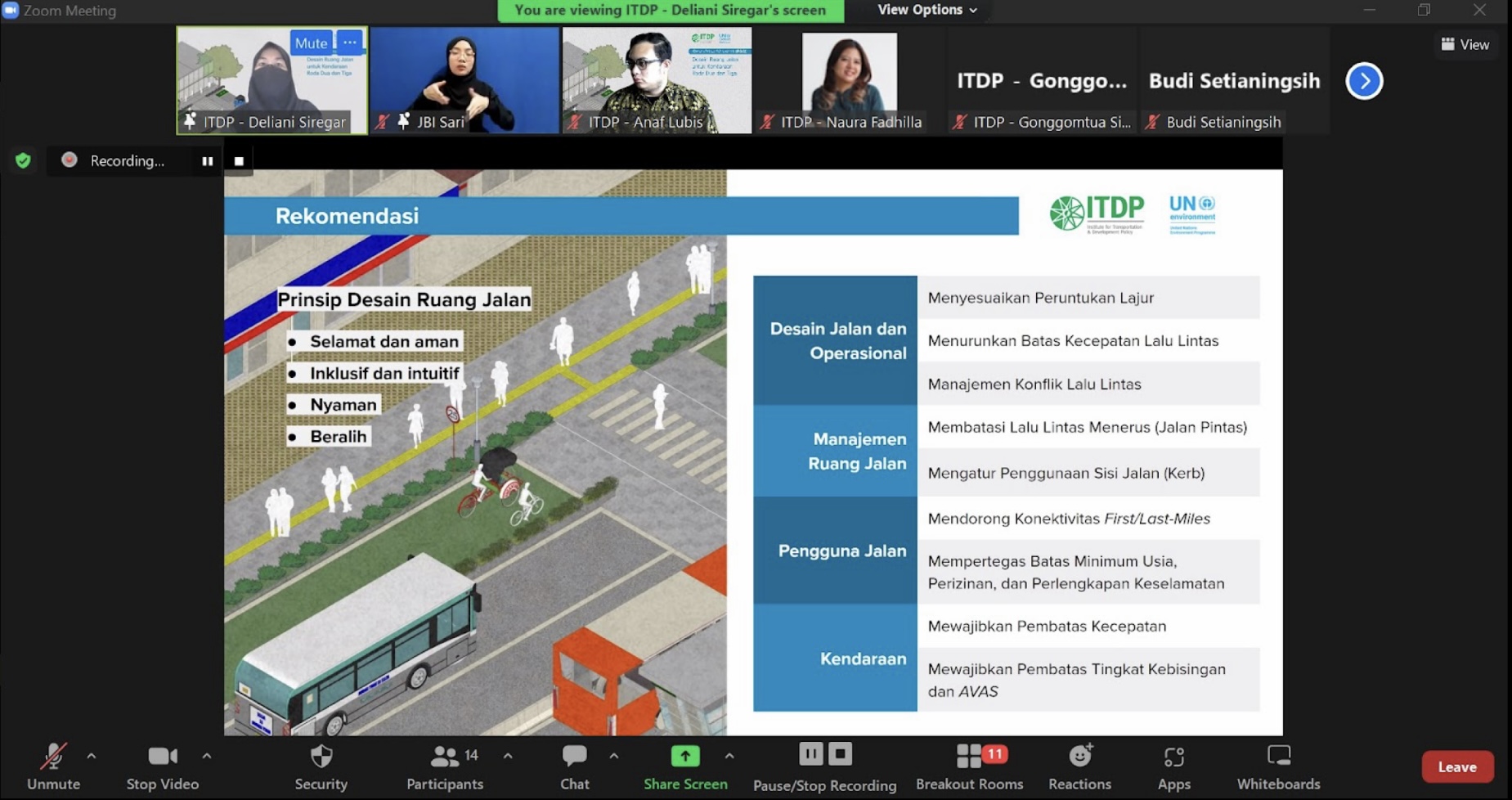Two and three wheelers are the most common and accessible transportation modes used by people from lower-middle-income countries. However, the ease of access provided by 2&3 wheelers vehicles has not been a guarantee of safety for its users, as well as the other road users. As part of the “No and Low Emissions Mobility” program, UNEP and ITDP are working together to implement the “Mainstreaming e-mobility: focusing on electric 2&3 wheelers and policies on urban traffic integration” program. ITDP Indonesia is currently developing a street design recommendation for 2&3 wheelers, particularly electric vehicles, which are expected to grow significantly in the future.

On November 18th, 2021, ITDP Indonesia has held an FGD on road safety issues relating to conventional motorcycles and e-motorcycles, with the results of the discussion used to make recommendations. Following the event, an FGD on street design recommendations for 2&3 wheelers was held to accommodate feedback from road users. With the hope of providing better services to all road users, this discussion has included a representative from each respective group.

The FGD began with an opening speech by Gonggomtua Sitanggang, representing the Southeast Asia Director of ITDP Indonesia, and an introduction from ITDP Indonesia regarding the main points of the discussion. The participants were then divided into 4 breakout rooms, each with its own facilitator and co-facilitator, to have a thorough discussion of the given recommendations. Each breakout room represents a different community group. For example, breakout room 1 represents people who are blind and deaf, breakout room 2 represents people who are physically disabled, breakout room 3 represents women’s voices, and breakout room 4 represents the elderly, children representative, and also people who are mentally or physically disabled.

In this session, the participants were asked to examine 9 recommendations, including lane allocation, traffic speed limitations, traffic conflicts management, shortcut restrictions, roadside use, first/last mile connectivity, driving requirements, noise level limiters and AVAS. They were also asked to address their opinion on safety, experience, implementation issues, considerations, and urgency concerning those recommendations. Each respective group has given a distinct response, resulting in diverse and inclusive feedback. One of the conclusions that can be drawn from the recommendation is that the adoption of electric vehicle should be the opportunity to improve street safety as a whole including for vulnerable groups and to optimally integrate with public transportation system including to provide accessible public transportation for people with disabilities.
The activity ended with each breakout room facilitator presenting the conclusion of the feedback. The recommendations draft would be refined based on the feedback from this FGD and expected to be published by September this year. Many adjustments must still be made regarding the regulations and policies of electric 2&3 wheelers. As a result, there is a need for collaboration between the government and stakeholders in order to achieve the safety of urban mobility for all road users.
